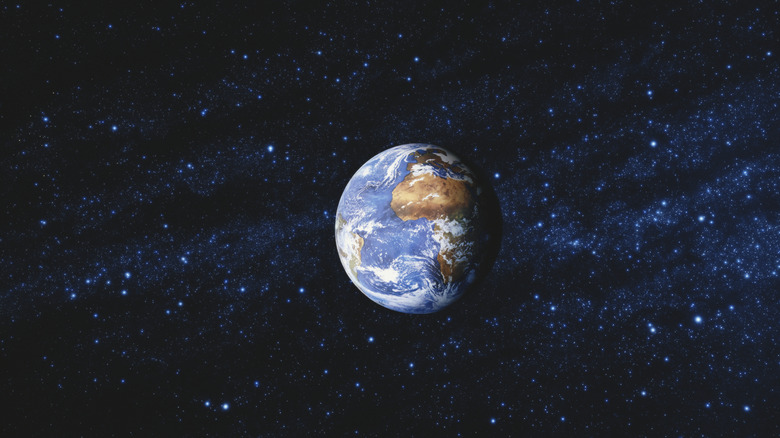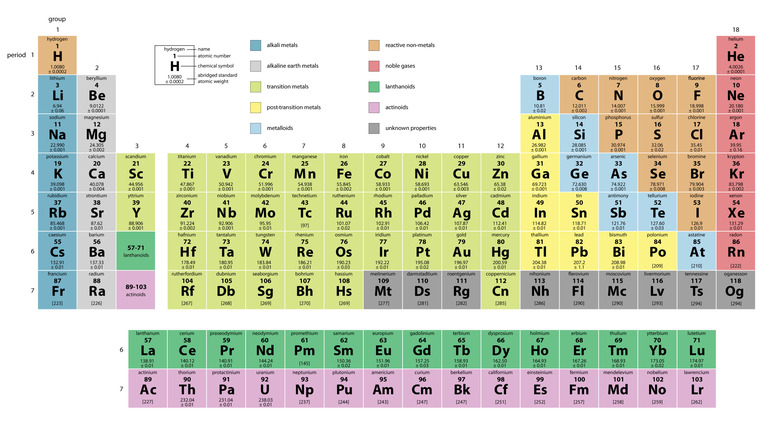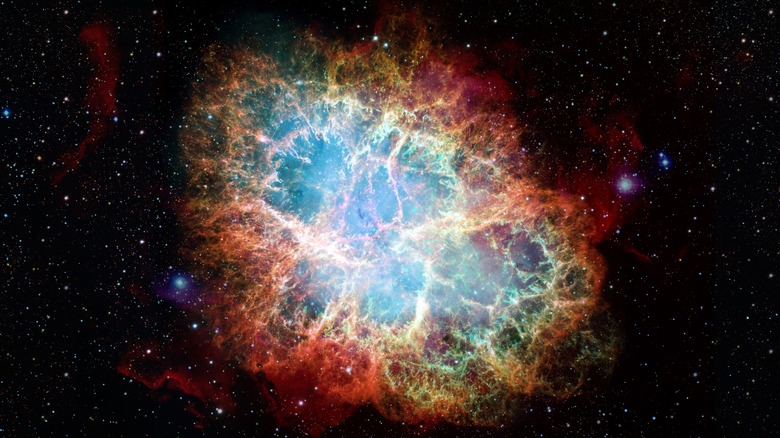Molecules That Can Never Exist Naturally On Earth
The mysteries of outer space are too great for anyone to truly wrap their head around. Our view of the universe is incredibly narrow, and almost everything we discover about it only raises more questions. Although we are naturally drawn to the dramatic sights of supernovae, planetary nebulae, and constellations in the night sky, the greatest mysteries of space are also on the chemical level. Indeed, far beyond our little blue orb, there are molecules that don't even exist on Earth.
The interstellar medium – the space between stars — is primarily made up of gases. Hydrogen is the most abundant, but helium comes in second place, and it plays a special role in the chemical world. Helium is a noble gas, part of a group of elements that do not naturally form bonds with other elements, meaning they only exist independently, not as part of any molecule. The longstanding scientific assumption has been that noble gases are completely inert, but it turns out that the laws of space are different from those of our planet. Here, we can only bind noble gases in laboratories, but in outer space, those chemical reactions happen naturally, and these so-called "impossible elements" may provide vital answers to the mystery of the universe's formation.
How noble gases work
If you look at the parts of the periodic table, you'll notice that all of the elements are arranged in columns called groups. Group 18, the furthest column to the right of the table, is typically colored differently than the rest, signifying a family of elements unlike any other. These are the seven noble gases: helium (He), neon (Ne), argon (Ar), krypton (Kr), xenon (Xe), radon (Rn), and oganesson (Og). The first six exist naturally on Earth, but oganesson, which is highly radioactive, has only been synthesized in a lab. It wasn't even discovered until 2002, and it's currently the heaviest known element in the universe.
Molecules form when atoms bond with each other. They either form covalent bonds, in which the atoms join by sharing electrons with each other, or ionic bonds, in which neutrally charged atoms lose electrons, and bond with other atoms to restore balance. The noble gases are outliers because their atoms already have the maximum number of electrons, and therefore they don't exchange with other elements. At least, not on Earth they don't, but scientists are discovering that noble gases behave differently in space.
The impossible molecules scientists found in space
The launch of the Herschel Space Telescope in 2009 finally allowed scientists to identify a type of noble gas molecule in space. Herschel captured data by tracking infrared radiation, and when it turned its attention to the Crab Nebula, something strange happened. The data showed a molecule in the wavelength of 485 microns, but there are no molecules in that wavelength. At least, that's what astronomers thought, until further data revealed the molecule to be argonium (ArH+), a combination of hydrogen and the noble gas argon.
The reason that argonium can exist in the Crab Nebula is that electrically-charged cosmic rays passing through space strip argon atoms of an electron, allowing it to bond with hydrogen. Researchers also discovered that argonium is created from a different isotope of argon than the one in Earth's atmosphere.
Astronomers long theorized the existence of another noble gas molecule, called helium hydride (HeH+), a combination of helium and hydrogen. It was presumed to exist because hydrogen and helium are the two most abundant elements in the universe, and the key elements in the composition of stars. Since hydrogen and helium were the primary chemicals created by the Big Bang, scientists came to believe that helium hydride had to be the first molecule that ever formed in the universe ... and yet, it didn't exist anywhere on Earth. The breakthrough finally came in 2019, when a study published in Nature demonstrated the presence of helium hydride in a planetary nebula 3,000 light years away.


